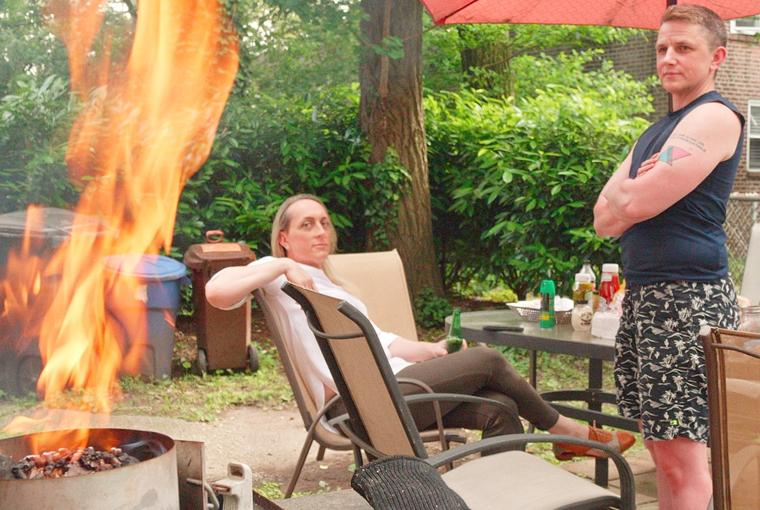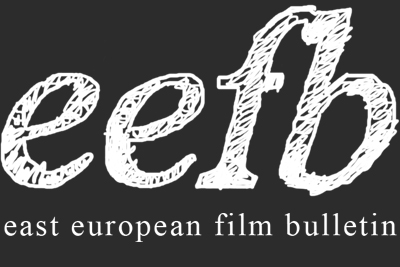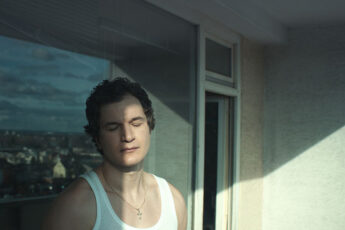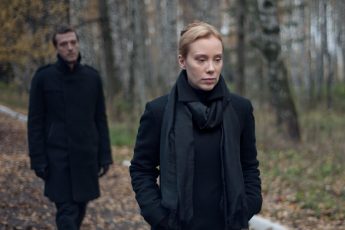“Welcome to the Most Traditional-Progressive Wedding You’ll Ever See.”
Matylda Kawka’s My Sunnyside (2025)
Vol. 150 (December 2024) by Jack Page
My Sunnyside is an informative, if tame, case study of two proudly transgender individuals that will ignite discussions of equality and acceptance, especially within the context of today’s political climate surrounding transgender rights. Settled in the quaint neighborhood of Sunnyside in Queens, trans couple Jo and Allie long to build a life together. Filming over the course of eight years, the documentary recounts both their aesthetic and ideological transition of identities and genders. Yet, the film remains relatively unambitious in comparison to its extraordinary characters on screen, and as a result it fails to do Jo and Allie’s complicated story justice. However enlightening and endearing, the unstructured narrative can only offer an uneven and partial family portrait that isn’t as captivating as its protagonists and subject matter.
At its strongest, the film successfully exposes the fallibility of traditional relationship dynamics and expectations. While it may shy away from the complex nature of gender relations, the film’s focus lies in deconstructing and undermining the hetero-normative and societal blueprints that often surround the idea of a regular nuclear family. Jo and Allie are perfect examples that prove there are no set masculine or feminine roles within a marriage or as a parent. Their journey is a novel reframing of stereotypical family values that juggles themes of identity, the self, and the unbreakable bond that can bind all and any kinds of people together.
Jo and Allie’s relationship has been both challenging and wholesome. When we imagine the trials and tribulations hetero-normative parents encounter, Jo and Allie’s history is even harder to comprehend. In addition to the fears and responsibility of parenthood, they must also navigate their own personal demons relating to gender identity and the great lengths they go to in order to feel accepted by themselves and by society as a whole. Invasive plastic surgery and cosmetic procedures aid them in their transitions, but with their new bodies, the struggles with society continue to surface. Voice coaching sessions, top surgery, and chin reduction surgery are all efforts to project, present, and embody their gender outward. Their hope is that they may be accepted and acknowledged beyond their close-knit community of Sunnyside. Jo and Allie have a wealth of supportive and like-minded friends, but even their ex-partners with whom they share children admit that it is an awkward adjustment for them, particularly explaining the situation to those who don’t understand transgender relations. Sadly, even some close relatives of Jo and Allie are yet to come to terms or even speak to them about their “reverse gender parenting.”
Allie, who works as a college professor, explains the everyday risks she faces in presenting herself as a female. On occasions she is addressed as “Sir” by her own students, and she has unpleasant interactions at the nail salon regarding the size of her hands. At the airport, she is misgendered by security and she dreads her regular hair removal sessions because she cannot wear make-up. These are just a few examples of how Allie lives with a heightened feeling of self-consciousness and a fear of being judged by others. Similarly, when Jo is diagnosed with ovarian cancer and undergoes chemotherapy, his main concern is the uncomfortable conversations he will have with his business’ stakeholders, investors, and associates. Rather than worrying about his health, Jo discusses the importance of being transparent as a colleague but fears what questions will arise. In a cruel twist of irony, Jo’s cancer diagnosis relates to a body part of the female sex.
The wedding ceremony sequence at the beginning of the documentary quickly reveals that Jo comes from a Jewish background (Allie on the other hand comes from a strict, Christian fundamentalist family from Texas). Throughout the film, Jo also details that his religious beliefs are as strongly linked to his identity as is his gender. He also shares some problematic family history about his physically abusive brother and even hints at an episode of sexual misconduct at the hands of a Rabbi. However, these backstories are mentioned fleetingly and without any real explanation. One would expect these memories to have everlasting implications for a person’s character, yet the film refuses to develop these traumatic pasts. Instead, the film takes a more reductive and romantic approach, focusing on the sentimental love story between Jo and Allie. Their coupling suggests that no matter how vastly unique we may be, there is a connection out there somewhere. This is visually represented in the final shot that abruptly cuts to an infinite nebula within the cosmos. As the camera pans out, filling the frame with a starry expanse, two tiny distant stars separated by an entire universe between them glint and sparkle above the rest. It is a cliched metaphor of the chances of two unique beings finding one another as Jo and Allie did. Despite their disparate backgrounds, setbacks, and the great divide, they managed to do the impossible.




Leave a Comment